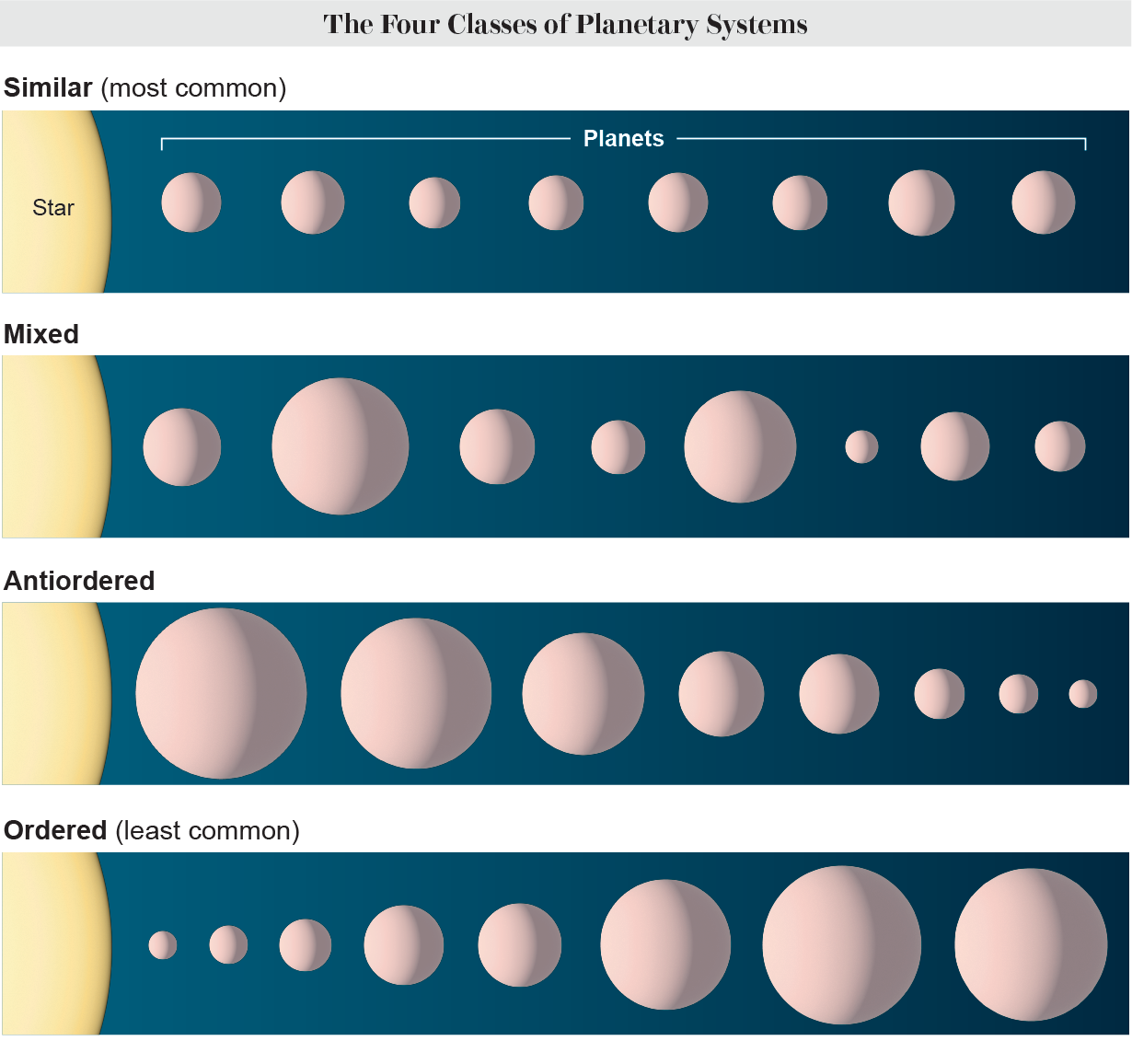New work suggests four distinct star system types—and finds our own in the rarest category
Thank you for reading this post, don't forget to subscribe!
Scientists had long thought our own solar system—an “ordered” arrangement of tiny orbs closer to the sun and big ones farther out—was a typical outcome of this complex process. But NASA’s planet-hunting Kepler mission revealed that most systems don’t resemble our own at all, instead having “similar” configurations of closely packed worlds all nearly the same size and mass, like peas in a pod.

This disparity inspired astrophysicists Lokesh Mishra, now at IBM, Yann Alibert of the University of Bern and their colleagues to investigate what other architectures might exist. This is a formidable task for modern telescopes but a question that computer models can easily explore. Through their research they noted a third system type in the observational data—a “mixed” distribution of shuffled small and large planets—and their simulations predicted one more: an “antiordered” architecture of worlds that get smaller and less massive the farther they are from their star. These findings, which appear in two studies in Astronomy & Astrophysics, reinforce the conclusion that similar architectures are most common and suggest that ordered systems like our own are the rarest. “In a few years, I believe, we’ll have something like a ‘standard model’ of planetary formation,” Mishra says. “And how different architectures of planetary systems emerge is a question that any standard model will have to answer.”
Crucially, this research introduces a new mathematical framework for quantifying similarities among a system’s planets according to any observable characteristic, such as mass or size; one number reveals the total range of values for that characteristic among the planets, and the other reflects how widely those values typically vary from planet to planet. This can help uncover patterns that reveal broad rules governing the birth and growth of planetary systems—as well as where those orderly rules break down. Matching their model’s predictions to observations suggests, for instance, that similar systems’ pea-pod planets emerge from sedate, low-mass protoplanetary disks, with higher-mass disks more easily making big planets—like our own system’s Jupiter—that can chaotically interact to yield the three other architectures. The powerful James Webb Space Telescope and other facilities may soon be able to test some of these ideas.
University of Chicago astrophysicist Daniel Fabrycky, who was not involved with the new research, says such upcoming observations make these kinds of studies especially valuable. “This is about building some set of concepts, around which we expect to be able to make interesting conclusions in the future,” he says. “And that’s always a good idea because it’s more scientifically robust to make predictions and then check them, rather than observing surprising things and painting on a theoretical gloss afterward.”
This article was originally published with the title “Order from Chaos” in Scientific American 328, 6, 10-12 (June 2023)
doi:10.1038/scientificamerican0623-10
ABOUT THE AUTHOR(S)

Lee Billings is a senior editor for space and physics at Scientific American. Credit: Nick Higgins

